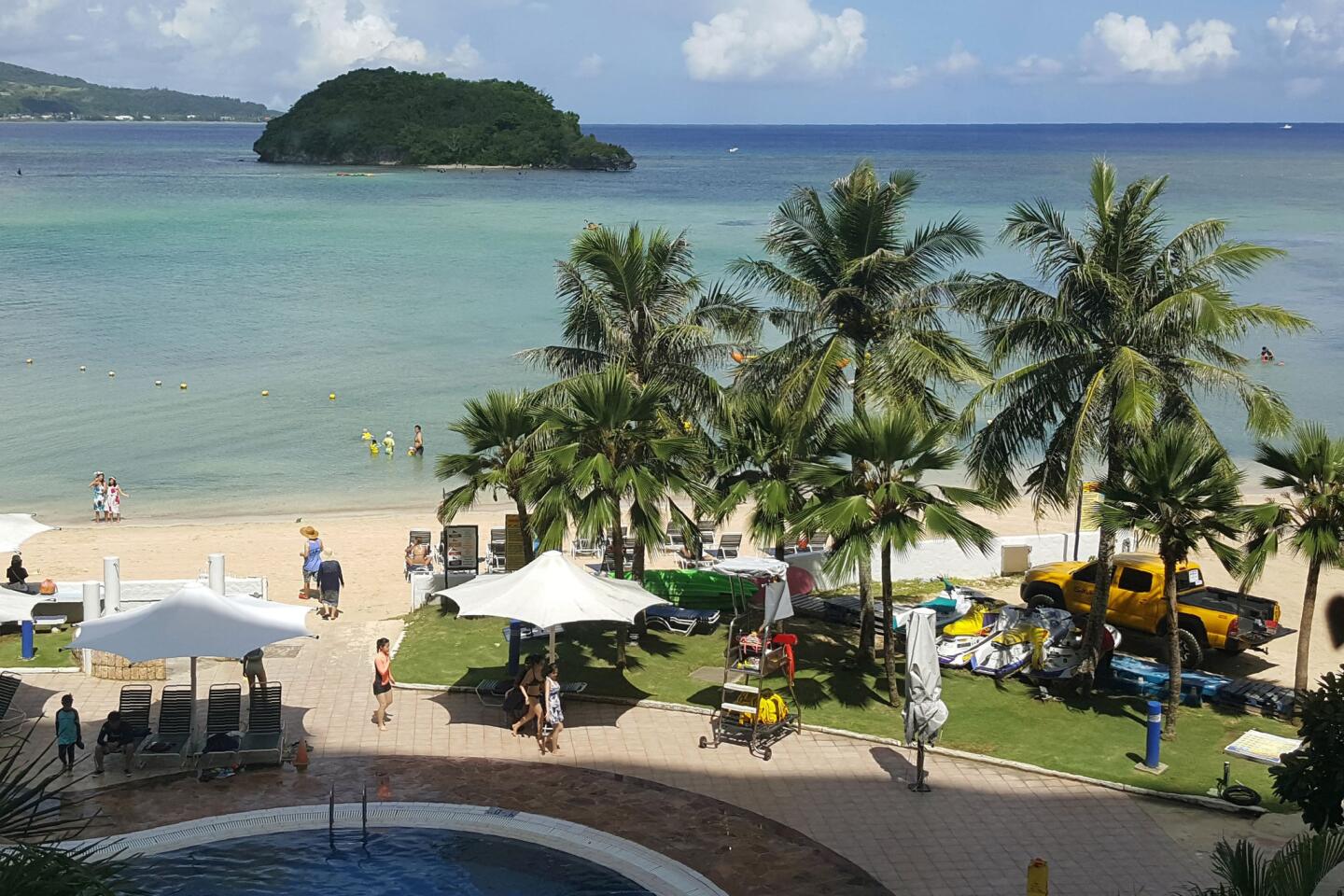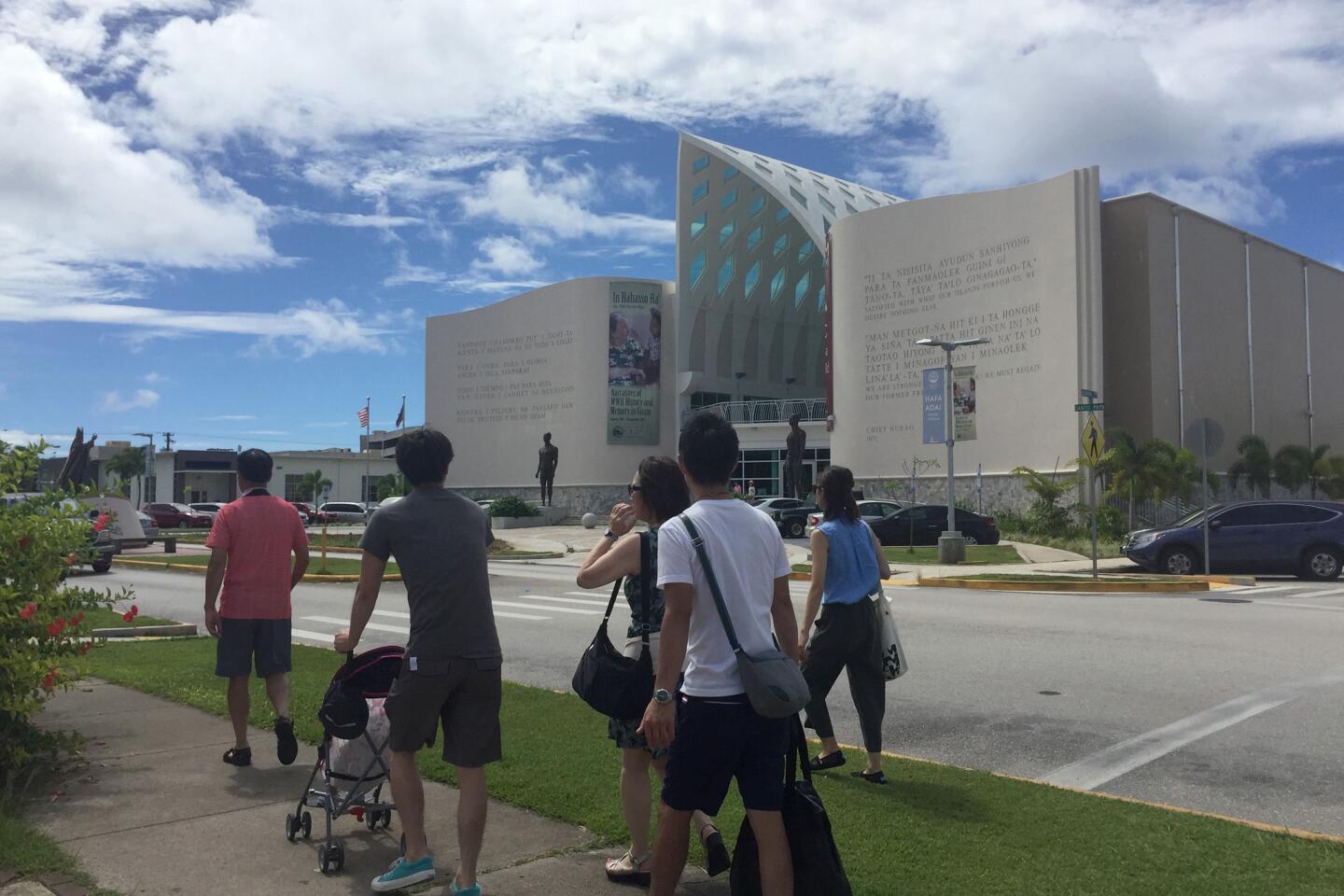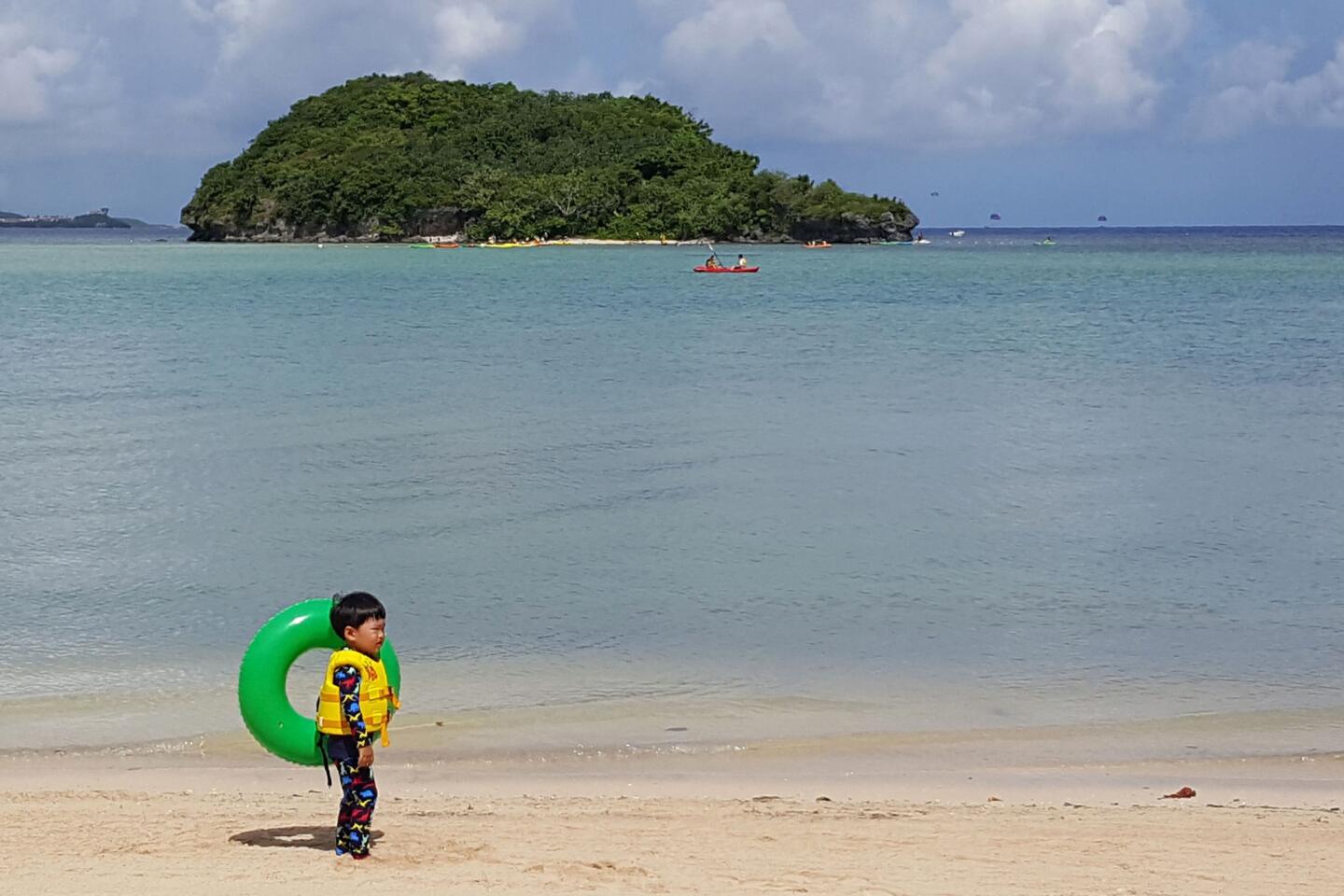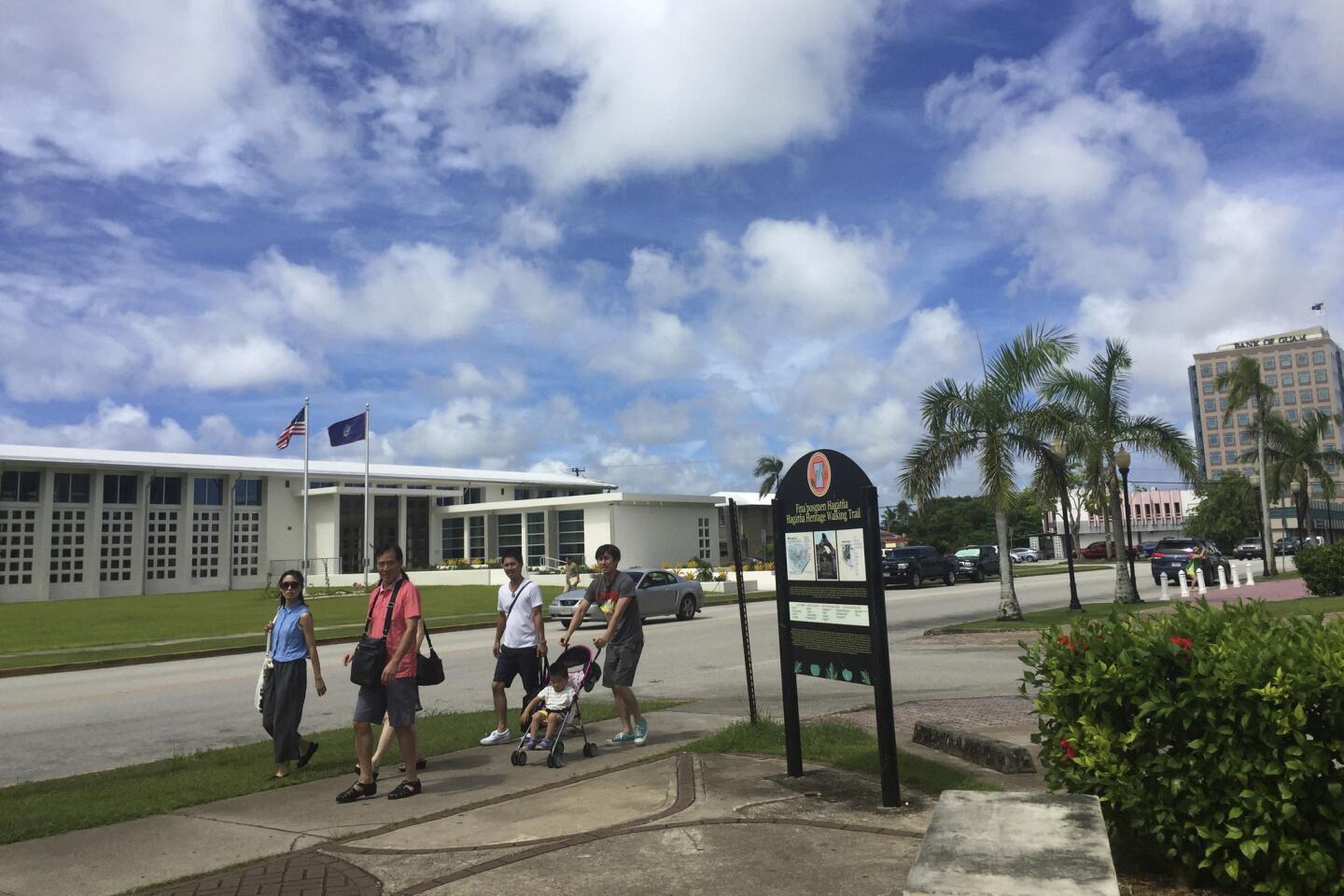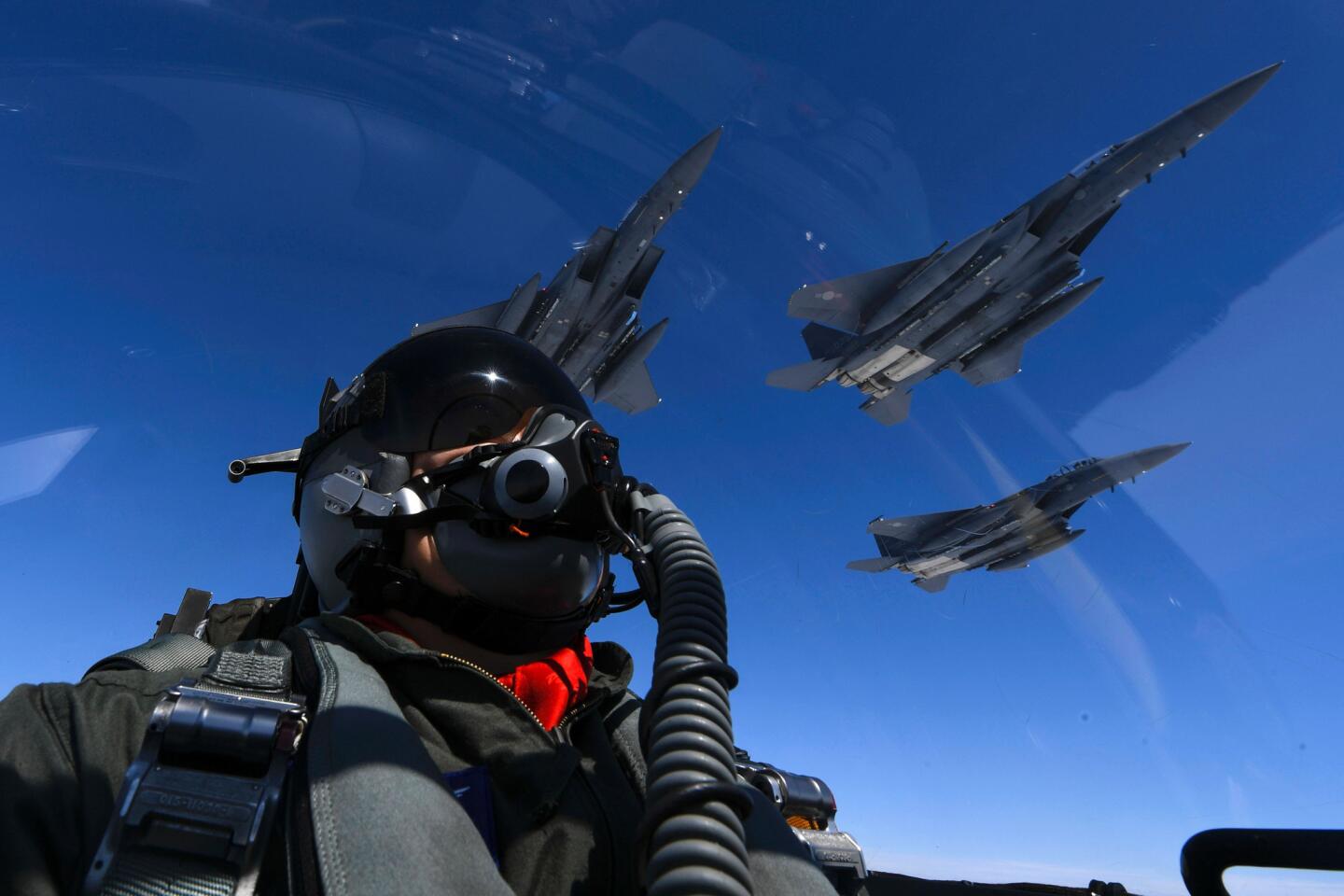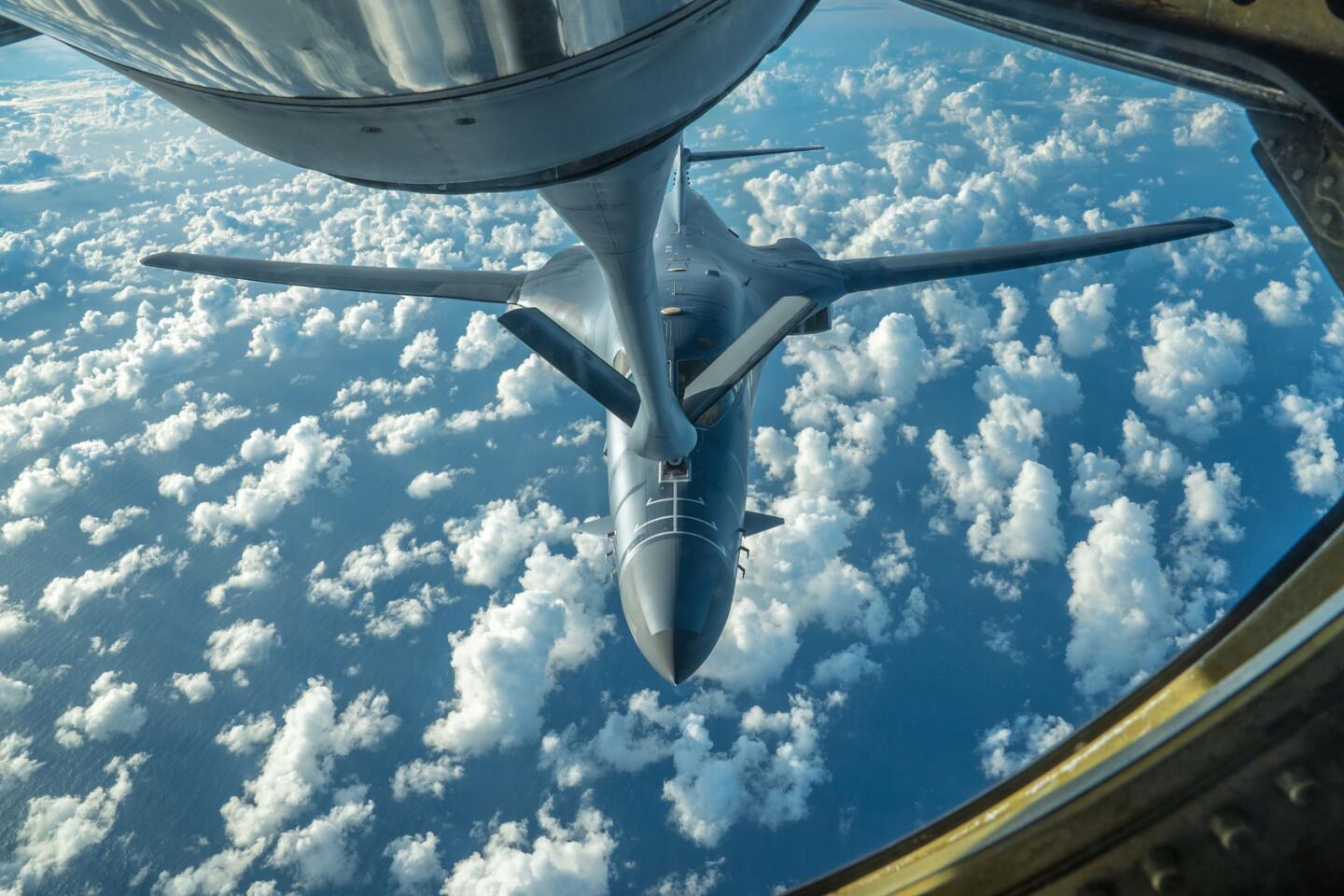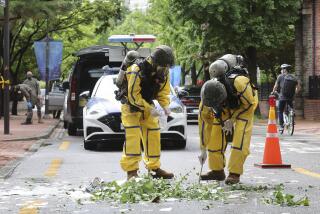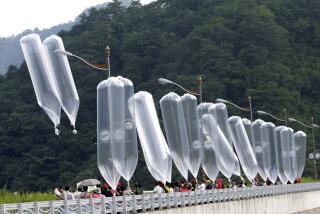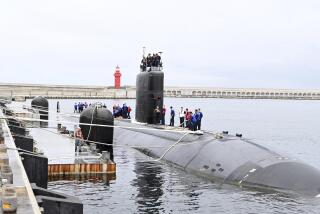Tiny Pacific island finds itself in the crosshairs of North Korea. Why Guam?
Reporting from Washington — After President Trump threatened nuclear-armed North Korea with “fire and fury” — and after Kim Jong Un’s hermit kingdom replied with a bombastic warning aimed at a speck of U.S. territory in the vast western Pacific — many Americans got busy Googling “Guam.”
To the outside world, the tropical island is perhaps best known as a bloody battleground in World War II.
In subsequent decades, Guam, the largest island in the Mariana chain, became an outsized bastion of U.S. military might in a remote but strategic region — a role that probably placed it in the gun sights of an erratic and often paranoid leadership in Pyongyang.
And at a distance of about 2,100 miles, Guam lies closer to North Korea than any other U.S. territory.
For the island’s 160,000-plus inhabitants — who awoke Wednesday to news of the North Korean military’s announcement that it was weighing operational plans for a ballistic-missile strike on Guam — it was a jolting switch from concerns like the local scuba-diving conditions, a bird population beset by invasive tree snakes and warnings of the ills of chewing betel nuts.
Native-born Guamanians are U.S. citizens by birth, and the island’s governor, Eddie Baza Calvo, took to YouTube early Wednesday to inform constituents that he had been assured by the White House that Guam would be defended as if it were the U.S. mainland should North Korea try to strike.
“This is not the time to panic,” he told reporters. “There have been many statements out there that have been made by a very bellicose leader, but at this point there’s been no change in the security situation here on Guam.”
More reassurance came from Secretary of State Rex Tillerson, who arrived on a previously scheduled refueling hours after the latest North Korean threat while en route home from diplomatic stops in Southeast Asia.
Declining to echo Trump’s belligerent tone, he played down the prospect of any immediate concerns that Kim would lash out at the island and said Americans “should sleep well at night.”
It wasn’t the first time the island has been on the receiving end of Pyongyang’s threats. There was similarly ominous talk from North Korea in 2013, making specific note that Guam’s sprawling Andersen Air Force Base, among other Pacific territories, lay within target range.
Still, many residents were worried about the unpredictability of North Korea’s leader, and by the warnings of “enveloping fire” emanating from Kim’s capital.
“It’s kind of scary, because we don’t know what this guy is capable of,” Rudy Matanane, the mayor of the town of Yigo, which lies close to Andersen, told the Pacific Daily News. “I hope our mother country does what’s right for us.”
For a place only about the size of Chicago, Guam is home to a good deal of heavy firepower, with the U.S. military presence taking up nearly one-third of its territory and some 7,000 troops stationed across the island.
In addition to Andersen, whose airborne arsenal includes B-52 bombers, military venues include Naval Base Guam, operating nuclear submarines and a U.S. Coast Guard station.
The 212-square-mile island, sometimes likened by military officials to a permanent aircraft carrier, is also shielded from ballistic missiles — at least in theory — by the Terminal High Altitude Area Defense, or THAAD, similar to the one the U.S. is in the process of deploying, controversially, in South Korea.
Not unusually for a small, contained territory with a large military presence, there are occasional tensions between Guam’s civilian population and what can seem an overweening outside power. But the big U.S. deployment, together with tourism, is the island’s economic lifeline, and Guam residents join the military in disproportionately large numbers.
Though tiny, Guam has witnessed some dramatic historical upheaval. Portuguese explorer Ferdinand Magellan, on his way around the world at the behest of the Spanish king, arrived in 1521, setting the stage for three centuries of Spanish colonial rule, the remnants of which can be seen in a scattering of landmark forts, palaces and churches.
As was the case in so many colonial outposts, contact with Western powers came at a terrible cost to the island’s indigenous people. Smallpox burned a hellish path through the native Chamorro population, punctuated by natural disasters like typhoons and earthquakes. But Chamorros remain the largest ethnic group in Guam today, and have managed to keep their native language alive, using it alongside English.
Ceded to the United States at the close of the 19th century, Guam and its people fell captive to the Japanese soon after the Pearl Harbor attack in Hawaii in 1941, enduring more than two years of nightmarish occupation. Five years after the war’s end, the island became an unincorporated U.S. territory, by act of Congress.
Guam’s residents can’t vote in U.S. presidential elections, giving rise to some tart social-media commentary about how they did not elect Trump.
The territory’s nonvoting congressional delegate, Democrat Madeleine Z. Bordallo, put out a statement urging the president to show “steady leadership” in dealing with North Korea.
ALSO
Trump makes false claims about U.S. nuclear arsenal
North Korea: What happens when the ‘fire and fury’ starts?
More to Read
Sign up for Essential California
The most important California stories and recommendations in your inbox every morning.
You may occasionally receive promotional content from the Los Angeles Times.
